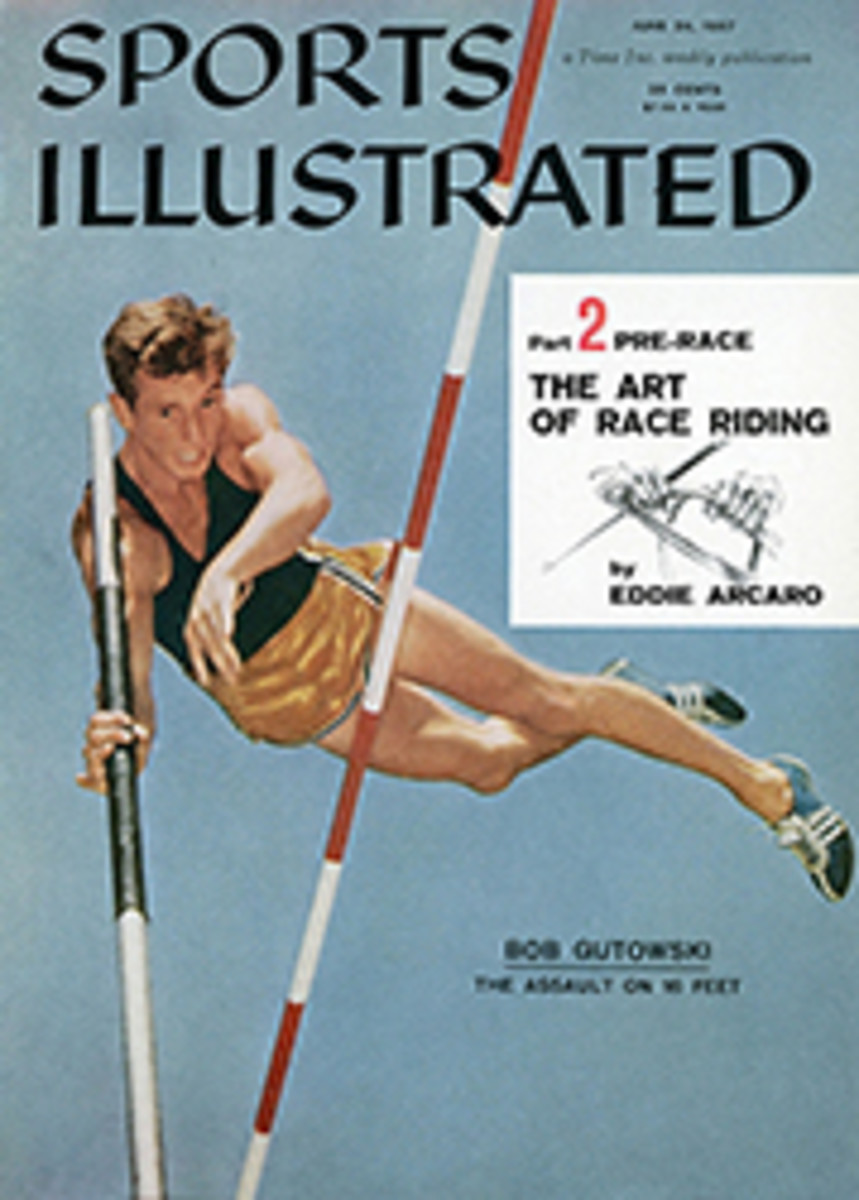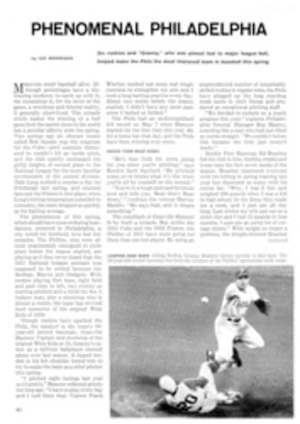
HENLEY FOREVER
Most normal sports-minded Englishmen—which means practically all of those beyond the bassinet—take it quietly for granted that the Henley Royal Regatta stands as a splendid and immovable period piece in a world where somebody is always heaving the furniture about. After all, for 118 years they have managed to keep it that way, and today Henley is still Henley, a grand old rowing classic that goes on as serene and unchanged as the beautiful reaches of the Thames where it is held.
For four days in the first week of July every year, the regatta transforms the sloping meadow and shaded lawns on either side of the course. Candy-striped marquees like the one on page 18 blossom on the shores while punts and houseboats are moored in nudging intimacy behind the booms which protect the course. The ladies brighten the scene in their prettiest and summeriest frocks. The males, like the young bloods from The King's School, Canterbury, shown opposite, top their white flannels with blazers and band their boaters with colors so startling that any competent ornithologist would recognize it as mating plumage. Young swains take their girls boating on the Thames, and splayfooted old family retainers serve tea parties on the lawn.
These things persist in spite of the fact that the regatta is regularly set upon by the barbarians in the form of competitors from the Continent, from America and from sundry parts of Asia and Africa. Two years ago, for instance, the Russians invaded Henley for the second year in a row, and this time the shaven-pated men from Moscow first set officials on their ears by withdrawing their much-heralded entries in the regatta when a dock strike held up the unloading of their shells. Then, after issuing an uncomplimentary manifesto, the Russians finally re-entered and, to nobody's joy, won three trophies.
"Sturdy oarsmen," murmured one Old Blue in the tight-lipped way which distinguishes a Henley regular. "After a few years, I'm sure they could get the hang of it."
Before the Russians came along, the most publicized single dust-up at Henley concerned a young Philadelphia ex-bricklayer who is listed on the records as J. B. Kelly. The familiar version of the Kelly story is that young John came to Henley in 1920 to compete for the Diamond Challenge Sculls but was barred for having once worked with his hands. As a matter of fact, Henley did have a rule disqualifying workingmen (since abolished), but Kelly was thrown out because he represented the Vesper Boat Club of Philadelphia, at that time permanently excluded from Henley for "professionalism." Kelly, however, took the whole thing as a slur to the workingman and left in anger. He went on to win the Olympic sculling gold medal and promptly posted King George V (who had paid only one brief visit to Henley in his life) his sweaty rowing cap. His Irish dander still up, Kelly returned to the States and began training John Jr. And sure enough John Jr. won the Diamond Sculls at Henley, not once, but twice, in 1947 and 1949. And then, of course, John Sr. married off daughter Grace to a prince to complete the story.
It was not until late in the 19th century that Henley decided that a gentleman could be an amateur but an artisan could not. In its early days it was not so fussy—not fussy at all. The races started as a purely commercial scheme in 1839 and by 1851 Henley had become ultrafashionable and added Royal to its name because H.R.H. Prince Albert became its patron. By that time Henley was the poshest and most famous racing course in the world, and the Grand Challenge Cup and Diamond Sculls represented the absolute pinnacles of rowing success.
Albert was Prince Consort to Victoria and since his time Henley has retained a sort of decorous Victorian raffishness. Certainly it's the only place in the world an Englishman would wear a shrimp-pink tie. But things never get out of hand, even the cheering. "Rowed, House" is the murmur which sweeps the tightly packed enclosures, and one knows Christ Church, Oxford has won the Ladies' Challenge Plate from Pembroke College, Cambridge; and one knows also that Henley, like ancient China, will always assimilate its invaders without sacrificing any of its sploshy, old-fashioned charm.
PHOTO
WALKER EVANS
THE HENLEY BLAZER
Henley's piped school blazer has now found its way to America. John Durand of New York (above) wears one of gray Viyella, piped with Oxford gray. It also comes in scarlet or navy ($59.50, Saks Fifth Avenue).
PHOTO
WALKER EVANS
PHOTO
WALKER EVANS
Bending forward for the final pull to the finish, the London Rowing Club crew surges past the grandstand pavilion during the semifinals of the Grand Challenge Cup race in Henley's Royal Regatta
PHOTO
WALKER EVANS
Decked out in pink blazer and cap of Westminster School, Christopher Fisher joins family for tea under shade of striped awning set up behind Henley grandstand

